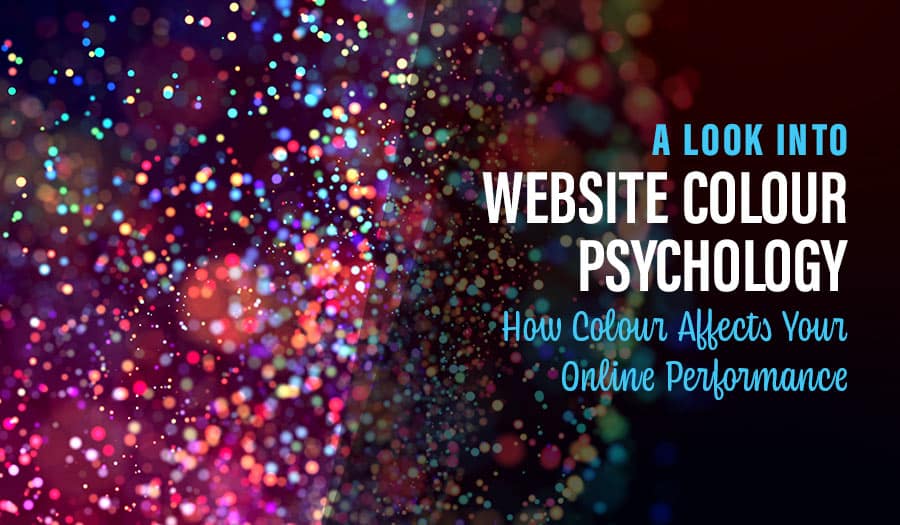We have all heard about the bull charging with rage at the red cape and the gentle blue sky soothing our minds, but is this a valid analysis of how colour affects us, or are these just cultural stereotypes? So how can Website Colour Psychology affect your business? Let’s look into Website Colour Psychology.
According to conversion consultant Jeremy Smith on his blog page, Kissmetrics, colour has a huge effect on what and how we buy online. While he admits that the research has aspects that are hard to verify scientifically, it’s hard to argue with conversion rates.
He describes the conversion process as a biological chain of events. We see the colour; this registers in the hypothalamus, which sends messages to the pituitary gland, then to the endocrine system, and then to the thyroid. The thyroids release hormones, causing mood reactions, emotions, and behaviour. (In other words, we buy something.) “Sales” has a classic definition of a transfer of emotion.
He suggests using strategy to fully utilise what we know about colour as a stimulant to buy. In the attraction phase, go by what your customer likes. Women’s favourite colours are blue, purple, and green; men like blue, green, and black.
Website Colour Psychology
Major retailers use these stated preferences to attract visitors to their web pages, although other strategies come into play as well:
- Women’s least favourite colours are orange, brown, and grey.
- Men’s least favourites are brown, orange and purple.
- Orange, although both genders claim not to like it, is often used as a conversion button because for whatever reason, it is noticeable.
- Another suggestion regarding conversion buttons: perhaps the button should be the only item of a particular colour on the page.
- Black attracts both men and women to luxury items such as cars, handbags, clothing and jewellery.
- Orange and yellow, both warm sunny colours, are used to depict children’s “fun” retail items, even though yellow is claimed to cause children to cry when used as a room colour. Smith suggests that perhaps these colours cause excitement as well as anxiety.
- Yellow screams “caution!” Also, “Look at me!”
- Blue is acknowledged to calm the tension within us, and is often used for the websites of banks, investments, and other institutions which want to inspire trust and induce tranquillity. Blue, however, is not good for food.
- Predictably, green suggests nature and environmental matters; green would be a good choice for an outdoors website, or one slanted toward natural products.
- Colour preferences on websites are not consistent with popular brown and grey choices for room decor. Also, colour is associated closely with memory, so if someone had a warm and affectionate experience in an orange and yellow room, then that particular person may respond positively to orange and yellow products.
- Use caution when tempted to overwhelm your prospective customer with colour. White is recommended as a method of giving your prospect space. The preferred “attracting” colour is most effective when used sparingly, with lots of comforting white areas to leave them emotional room to make their decisions.
- Also, Smith recommends changing the website colours, especially the conversion buttons, in order to run periodic tests of conversion rates. He states that he has achieved good results with seasonal preferences for different colours on different websites, suggesting that it may be the change itself that can make a difference.
Neil Patel and Nitika Puri on the website Quicksprout, in their article, the Complete Guide to Understanding Consumer Psychology, cite the contrasting colour (the fact that it stands out), as being more important than colour preference, especially when it comes to information (lead) gathering or convertibility.
It is difficult to overstate the importance of colour. Kissmetrics has published statistics that underline this vital aspect of marketing your website. Although other factors such as convenience, structural design, copy, and load times influence sales:
- Colour is the most important factor when deciding to buy.
- Colour is the most important factor in Brand recognition
- Colours that stimulate sales vary from culture to culture.
Website Colour Psychology: Further food for thought
Can Website Colour impact e-commerce sales?
Yes, it can. And that is why understanding the psychology of colour is so important when creating a website or marketing material with the intention to increase sales. When considering colour usage and its effect on sales, it is essential to consider three aspects: Colour Preferences, Contrasting Colours and Contextual Associations.
Can Website Colour impact UX?
Yes, it can. Colour is a key factor in how people interact with websites and mobile applications, as it influences user behaviour and the overall experience. Contrasting colours help to draw attention to important elements of a website or mobile application and create visual hierarchies that guide users through the page. Additionally, the way colour is used can have a big impact on how users feel when they are using the website or application.
How Does Colour Affect Sales?
Colours have a big impact on sales, as they can create an emotional connection with customers that can influence purchase decisions. By understanding colour preferences, contrasting colours and contextual associations, businesses can create marketing materials that effectively capture customer attention and evoke the desired response. Colour also plays a big role in branding and establishing the personality of a company or product, which can help to draw customers in and encourage loyalty.
By carefully considering colour when designing websites, mobile applications and other marketing materials, businesses can ensure that they are reaching their target audiences effectively. The right use of colour can increase customer engagement, boost sales and help to create a positive brand image. With the right colour palette, businesses can make sure that their message is getting across in the most impactful way possible. Pixelfish can help you make the most of colour in your marketing materials, so get in touch today to see how we can work together.
Can you trademark a colour?
Yes, it is possible to trademark colour in certain circumstances. This involves registering the colour with an official body and is a complex process involving costly fees. Generally speaking, colours are protected under intellectual property law rather than trademarks – although it may be possible to register a trademark for a specific use of a particular colour or combination of colours if it is sufficiently distinctive. Pixelfish can provide you with more information on this subject, so feel free to get in touch to learn more.
Thanks for your query! If there’s anything else we can help with, please let us know. We look forward to hearing from you soon.
Famous Colours and the Brands who “Own” them
Many of the world’s most famous brands have registered trademarks for their iconic colours. For example, Tiffany & Co. is well-known for its trademarked robin’s egg blue, while John Deere’s signature green and yellow are also trademarked. Coca-Cola owns the rights to a specific red colour synonymous with the brand. By trademarking their colours, these companies ensure that they remain exclusive to their products and services.
At Pixelfish, we can help you create a signature colour or combination of colours for your business. We have experts in branding, design, and marketing who can craft something unique for you that will stand out from the competition.
Contact us for more information about your website colour choices.
Let Sydney’s leading Web Design Agency take your business to the next level with a Pixel Fish Small Business Website.
Check out some of our latest Website Design projects.
More Reading
Top 10 reasons to choose WooCommerce for your business
Top 10 Benefits of Mobile Friendly Web Design
How Social Media Can Benefit Your Business
The evolution of the web designer from hired gun to trusted partner
6 Ways to Turn Your Website into a Recruiting Tool for Your Business
How to Write Effective Website Content for Your Business
Does my business need a trademark for my website domain name?
Top 3 Ways Website Design Impacts SEO For Your Business
5 Tips to Online Marketing to Millennials
How to choose the right domain name for your business



